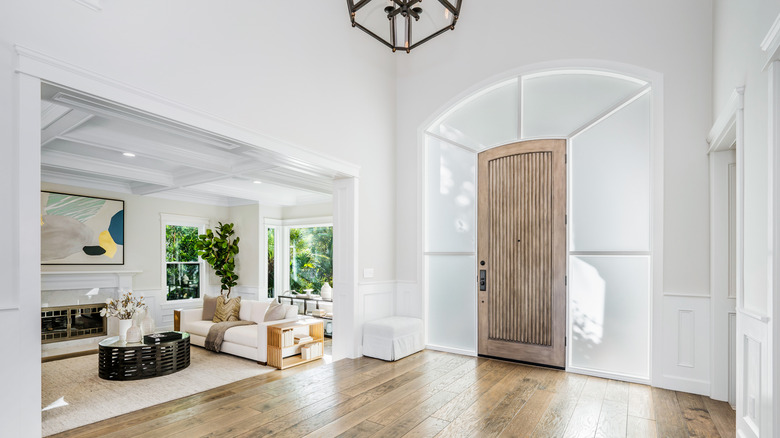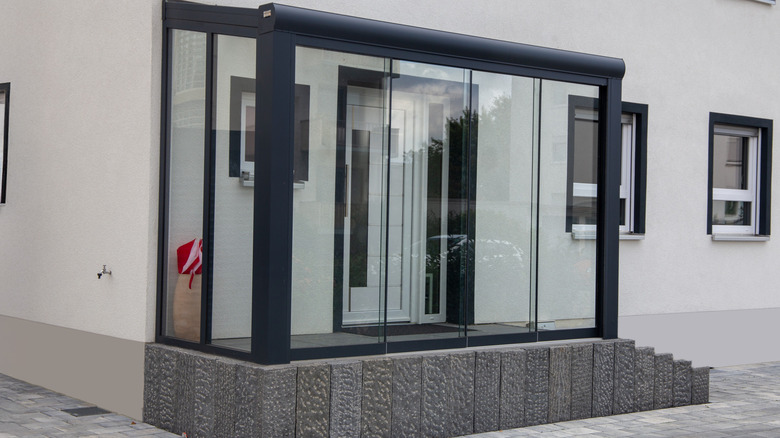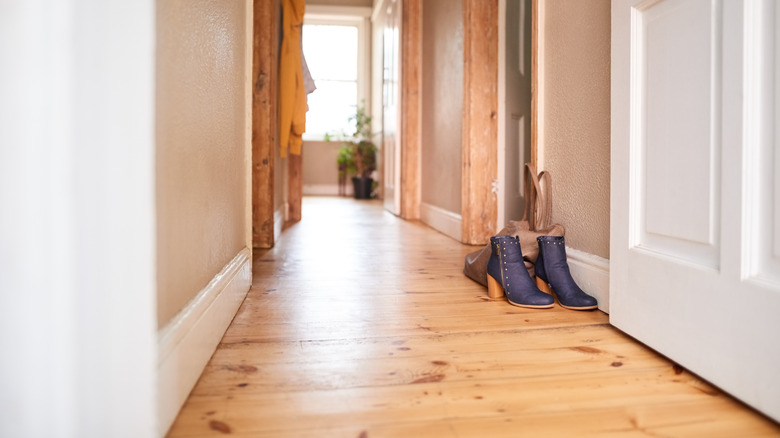The Outdated Entryway Trend In Homes That Deserves A Major Comeback
Vintage designs and decor aren't just for accents and small elements in your home. It seems that vintage fixtures and home layouts are also making a return, with everything from conversation pits coming back in style to a variety of other retro design trends. One outdated interior design feature that deserves a major comeback, especially if you're building or renovating your entryway, is the vestibule. Entryway vestibules are small portals that separate your front door from the street entrance into your home. While popular between the 1800s and 1900s in many homes and often found in Metropolitan cities, this design is not as common as it used to be. However, not only does it add a stylish element and an extra opportunity to design something unique, but it also could have some other benefits, like temperature control and a cleaner dwelling overall.
While not every home can accommodate a vestibule, you shouldn't completely disregard it. If you are familiar with or have seen a vestibule, then you know it is a particularly small space meant to house very little. A small table, maybe some hanging hooks, or various other compact furnishings are usually kept in this area, if none at all. It really comes down to the square footage of your vestibule, as some are even too compact for anything other than wall decor.
Get creative with your space
Should you decide to add a vestibule, or if your entryway already features one, this is definitely a place where you want to make the most of vertical space. Hooks to hang outdoor gear and small shelves will make your entryway more functional. Or, just framed art and photos are a great way to decorate this tiny area. Your entryway vestibule is also where you can tap into your creative vibes — consider bold wallpaper, patterned tiles or flooring, and moody color palettes. Your vestibule is small, but useful for adding those dramatic elements you might not use in larger spaces throughout your home. This is also an introduction or peek into the rest of your home, so you can design it to represent your personal preferences.
Just like decorating your entryways, planning how to design your vestibule is important. If you have a little more space to work with, you could potentially add a narrow table to hold keys and other accessories. Paint makes a big difference, as tiny areas can seem a bit cramped with the wrong paint color. Lighter shades are ideal for opening up a compact space, especially one that doesn't have a lot of natural light. However, moody colors work, too, as long as you choose the right finish. Darker paint can help blur edges and corners, making a small area seem larger. You can also combine paint and wallpaper, introducing a bold pattern that really makes this vestibule a statement.
Vestibules have many other benefits
It's not just the decor aspect that makes a vestibule worth having in your home, though. This entryway provides a very valuable space between the entrance to your interior and the outside. Just by creating a little distance from one door to another, you're potentially allowing a brief reprieve where bacteria can be stopped before entering your home. Shoe storage and coat hooks allow you to remove items that are carrying outside germs and keep them from tracking through the rest of the house. The vestibule also keeps weather like rain and snow from being brought in, and adding a rug to wipe off your shoes will keep floors cleaner.
Temperature control is another benefit. This area stops air and heat from escaping your interior when one door is closed, and also keeps outdoor temperatures from affecting the interior. These also help reduce noise coming from outside your house, which is always a plus. Vestibule additions also elevate the exterior and entryway of your home. They can create an inviting space, too, giving your home a little something extra. If you can create one of these for your dwelling, it's certainly an outdated trend that needs a good comeback.


